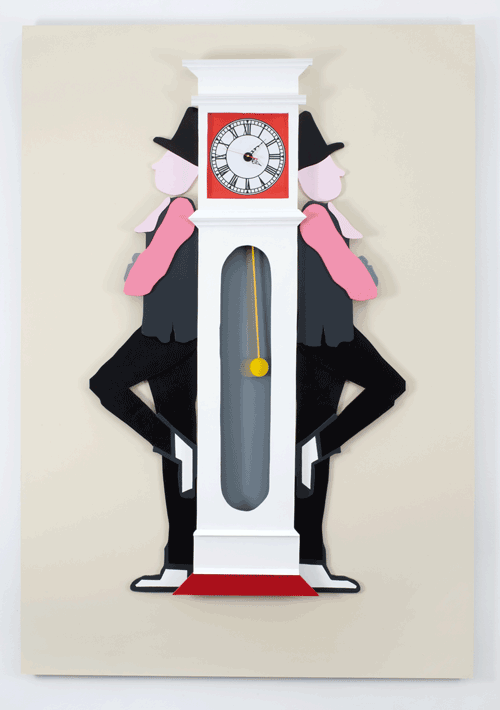Claus Richter
Clages
Clages

Escapism. Is there anything that hasn’t been discredited with this word? Hollywood films and Disneyland, Michael Jackson and Romanticism. Having opened the door to a fictive world, films, fantasy landscapes and images stand accused of preventing an engagement with reality. Wrongly accused, according to the Cologne-based artist Claus Richter, who goes on record in one of the accompanying texts for the exhibition: ‘I am a child of escapism. Adorno and Debord’s sombre admonitions fell on deaf ears with me.’ Even as a child, he liked to take refuge in fantasy films and electronic toys, which he continues to collect. Yet he appears to be equally obsessed with the English fairy-tale tellers of the 19th century, in particular Lewis Carroll’s Alice’s Adventures in Wonderland (1865). At least that’s the impression one gets after seeing this exhibition ‘Mirrored Mountain Castle’.
A sign in the style of an English pub could be seen from a distance, hanging outside the gallery. Its kitschy colours depicted a reclining pink cat with a door in its belly, surrounded with the words ‘Come in and Stay’ by way of invitation. Anyone entering the gallery was indeed greeted by a large, walk-in cat made out of plush-covered wire. The sculpture partly dissolved cat (2011) was supposed to represent the Cheshire Cat Alice meets in Carroll’s wonderland. Yet Richter drew upon the 1951 Disney animation: as the Cheshire Cat starts to dissolve in the darkness, there is a brief moment of transition where only the pink stripes of its coat can be seen.
Two large grandfather clocks – typical ornaments of the 19th-century bourgeois parlour – were incorporated into reliefs and hung on the wall: part painting, part sculpture. Both entitled time keeper (2011), the ticking clocks formed part of a sort of ‘picture’ and were flanked on each side by abstract male figures in old-fashioned clothing. Genuine, functioning objects and depictions of themselves, they oscillated on the threshold between the real and the imaginary. Richter was also playing on the frequent symbolic use of the grandfather clock as a door to other worlds.
The final element in this exhibition pointed to a different kind of illusion. Reader’s Digest (2011) – a bookshelf displaying the spines of various self-help books with titles like The Art of Being Happy or How To Get Out of Your Own Way – is an abstract relief image similar to the clock pictures. This imaginary library of self-improvement is borne along by an unbounded desire for happiness. The shelf, like the Cheshire Cat and the clocks, belongs to an enchanted world in which the magic wand of imagination represents the sole link with reality. But it’s a reality whose meaning cannot be captured by sober imitation; the escape works only when it’s a fictional one.
Translated by Jonathan Blower














